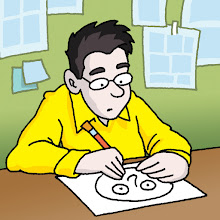I was still in elementary school when my family moved outside our school district while our new house was being built. My parents didn’t want us to change schools, so they didn’t inform the district. Instead, we carpooled with our father as he dropped us off at our different schools. He had a lot of kids, and the schools opened at different times. A few of us would wait with him at the Pinecone Café, a little dive along Highway 99. My dad would give us each a quarter, and we became good at playing the lone pinball machine, Evil Knievel. We had only one quarter and needed to make it last. There was also a jukebox that remained silent because most of the men there were just like my father, just easing into morning with a simple cup of coffee, a bear claw, and a newspaper. But I was curious and had plenty of time, so I read through the music selections. I recognized many of them. One choice made my eyes go wide. I found something my young little mind never conceived would ever be on a jukebox. Not even the magic thrill of Evil Knievel pinball was a match for my desire to listen to this selection. To this day, I still wonder what some of the men in the café thought when the theme for The Good, the Bad and the Ugly greeted them in the morning. In the mornings that followed, I wondered if they placed private little bets with themselves, which it would be, the pinball? Or the theme? I know that for me, it was a dilemma I faced every day.
Sergio Leone is credited with creating the subgenre of Spaghetti Western. But what he did, other filmmakers have done; that is, you take an existing genre and spin it on its head with out-of-the-box thinking. In this case, by showing that a Western doesn’t have to be filmed in the American West, and that your heroes and bad guys follow the expected tropes established in the genre. The Good, the Bad, and the Ugly is the third in a series of Sergio Leone films. The previous were A Fistful of Dollars and For a Few Dollars More. It’s argued that each stands alone, and they are not formal sequels. But many would agree that that The Good, the Bad, and the Ugly has come to represent the ultimate in Spaghetti Westerns. When I saw it the first time as a kid, I didn’t care about all that. I was riveted by these highly interesting characters doing their best to out-best each other through wits and action while seeking a treasure in gold. Alliances shifted, revenges sought, and you couldn’t see what was coming next. It was thrilling to watch. And the music! Ennio Mirricone scored all three of Sergio Leone’s movies and has gone on to score hundreds more. The sound of his work is as familiar to my ears as Mozart or Beethoven. And it took root in my head during The Good, the Bad and the Ugly. When I started to buy music for myself, a CD of The Good, the Bad and the Ugly soundtrack was one of my first purchases.


